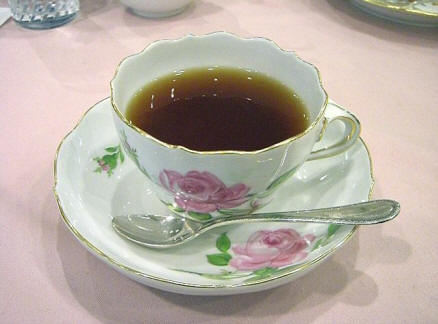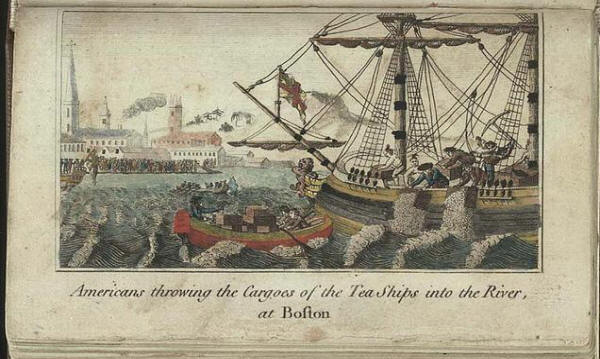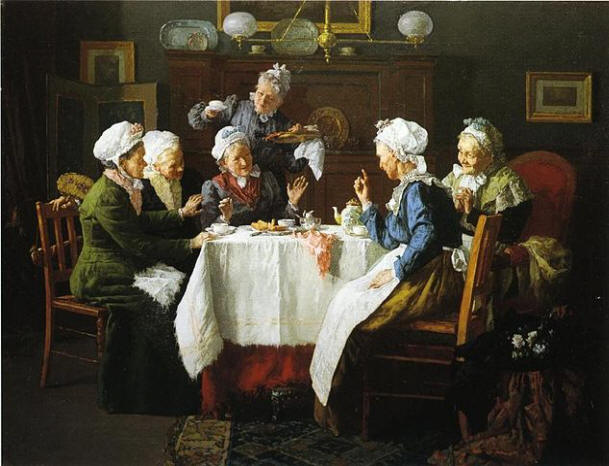|
A TASTE FOR TEA
By Mary Emma Allen
For relaxation, or as a way to start the day, a cup of tea
can't be beat. Even though I sometimes drink coffee, I
prefer tea such as English Breakfast tea, Darjeeling tea and
Earl Grey tea. Drinking tea was a tradition in my family,
something my grandmother and mother enjoyed with family and
friends.
"Have a cup of tea and we'll chat," my mom would
say almost immediately when I arrived at her house, 275
miles from mine. My grandmother had a cup of tea every
afternoon at 3 o'clock. Anyone around would stop and sit
with her at the kitchen table.
 |
| A pretty cup of tea |
Tea in American History
As I delve into the life of early Americans, I come across
the frequent references to tea as a favored beverage.
Modern day hospitality often calls for a cup of
coffee offered to guests.
However, in colonial days, tea generally was the more
common brew at any hour.
Some say tea was first sold in a public shop in Boston
around 1680. Before
long it was found in most apothecary shops.
One researcher claimed that more than 7,800,000
gallons of tea was drunk by one and a half million
colonists. In the streets of New York City, "tea water" was
sold by peddlers from push carts.
 |
W.D. Cooper. "Boston Tea
Party." from
The History of North America.
London: E. Newberry, 1789. |
Tax on Tea
If it hadn't been for the tax on tea, imposed by the
British, this country still might be a nation of tea
drinkers. When the
tea duty was forced upon the colonies, it struck the
colonists where it hurt and caused a great deal of
dissension. This was
one of the factors causing the young colonies to break away
from English rule.
Tea drinking was a habit most Americans had acquired though.
So even though they might have coffee for breakfast
(at that time, tea was still a common breakfast beverage),
they wanted tea for other meals.
Yet they refused, out of patriotic spirit and
economic necessity, to drink the tea when taxed.
 |
| "A Tea Party" by Louis C. Moeller showing a
group of colonial ladies at tea |
Substitutes Developed
Thus, in its place, substitute teas were developed.
Local herbs and plants were commonly used to make
what were referred to as "patriotic beverages," or those
which did not include imported tea.
"Liberty tea" was one most often used.
It was made from loosestrife, a very plentiful plant
in the marshes of this country.
It was four-leafed with pink or lavender blossoms and
grew in wet places.
"Labrador tea" was consumed in Maine.
It was created from two types of evergreen shrubs.
"New Jersey tea" was popular with the Sons of Liberty.
This beverage was made from the dried or fresh leaves
of a native wild shrub called Caenothus americanus.
It's white flowers grew in egg-shaped clusters.
The roots of this plant were used for making a red
dye, as well. The
bark could be used for concocting a gargle.
"Appalachian tea" was a substitute from the withe rod and
the inkleberry. This
sometimes was called "Carolina" tea as well.
Tea Time Treats
To accompany your tea, perhaps you"d like to try DONUT
MUFFINS. They are
cooked like muffins, but taste somewhat like donuts.
Mix together the following ingredients until dampened:
2 cups flour, 2 rounded teaspoons baking powder, 2/3
teaspoon salt, 1/2 teaspoon
nutmeg, 1/2 cup sugar, 2 2/3 tablespoon dry milk, 2/3 cup
water (or 2/3 cup milk instead of the dried milk and water),
1 large egg, 1/3 cup melted shortening or oil.
After filling paper-lined muffin tins 1/2 full, sprinkle
each muffin with a mixture of cinnamon and sugar.
Bake at 375 degrees F. for 20 minutes.
This recipe makes one dozen muffins.
(c)Mary Emma Allen
(Mary Emma Allen writes for children and and adults from her
woodland New Hampshire home and while traveling.
She also teaches workshops on "Writing Your Family Stories."
E-mail her and share your teatime memories and
customs:
me.allen@juno.com
)
|